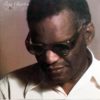“Let It Be”
Song by Ray Charles
Ray covered the Beatles song “Let It Be” on his 1977 album True To Life. Like it or hate it, the melody to this ultra-famous Paul McCartney song is known to just about everyone. Ray had his work cut out for him if he wanted to make “Let It Be” his own.
In fact, unlike, say, “Eleanor Rigby”, the arrangements on this Ray Charles Beatles cover remain remarkably close to the original. It’s led by piano, of course, but there are some George Harrison-like guitars on the edges (one wah-wah), and the drummer copies Ringo’s original performance to a noticeable degree.
One interesting new aspect here is the dramatic, opening splash in the first few seconds — sort of like the intro of “I Feel Free” by Cream, or “Shine A Light” by The Rolling Stones. After that, Ray and his piano come in, in a touching and quiet section with a much more bare feel than the original. Even when the band kicks in, the drums are snappy and sparse, and the bass is unobtrusive. A tuba, mixed low, bubbles merrily along and gives “Let It Be” some quirky melodicism.
A brass section, arranged by Larry Mahoberack, follows the Beatles’ version at times, but indulges in some dynamic twists of its own. The middle section, which was a guitar solo in the original, here is a trumpet solo, and it jumps into a higher key for it.
It is vocally where Ray adds his asides that truly make the song his own:
Whisper words of wisdom
“Let it be”
Seems like I can still hear her say, “Son!
Let it be…”
In this it is reminiscent of Ray’s great version of “Eleanor Rigby”.
Ray’s “Let It Be” also brings more attention to the “mother” part of the lyrics, rather than Paul’s rote repetition of the title phrase. Ray and Paul both lost their mothers when they were teenagers; the link between them as expressed in this song makes Ray’s performance all the more touching. Paul later said a dream he had about his mother inspired the “Mother Mary” phrase, but Ray makes the familial connection far more direct here.
As the song continues, some excitable Raelets join in, and a dramatic false ending is a fine way to end the song and, as the fifth and final track on Side 2, the True To Life LP.
Ray never evinced much of an opinion either way about The Beatles in general. He liked a good song, no matter what the source, but he wasn’t taken by Beatlemania or, one presumes, psychedelia and art pop. But overall “Let It Be” is a fine performance on an album full of them, and the arrangement helps build a moment that puts both Ray and The Beatles in a glowingly good light.
